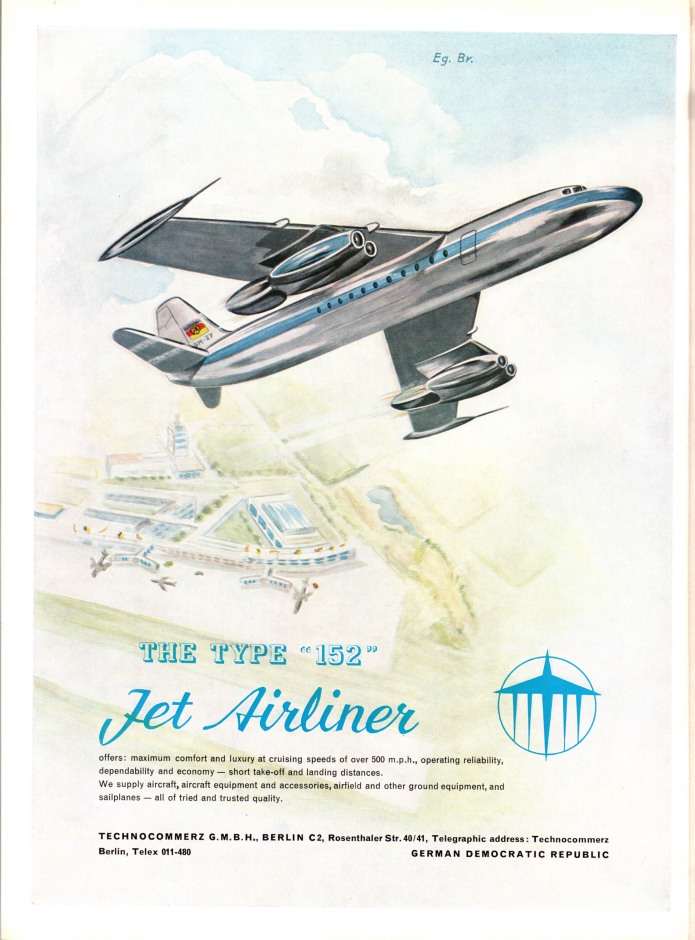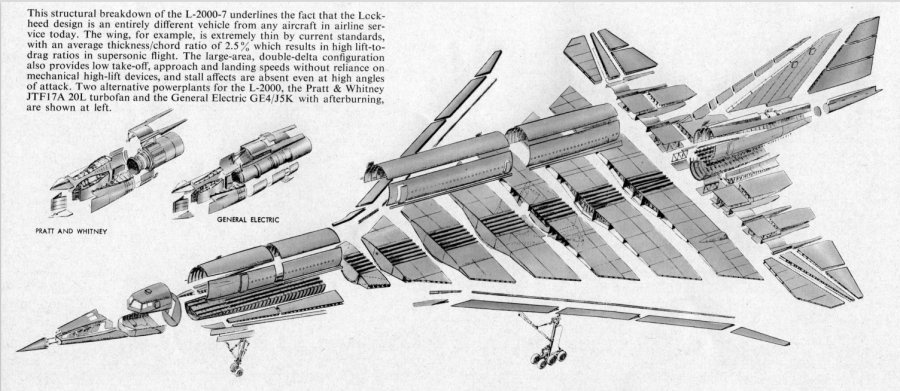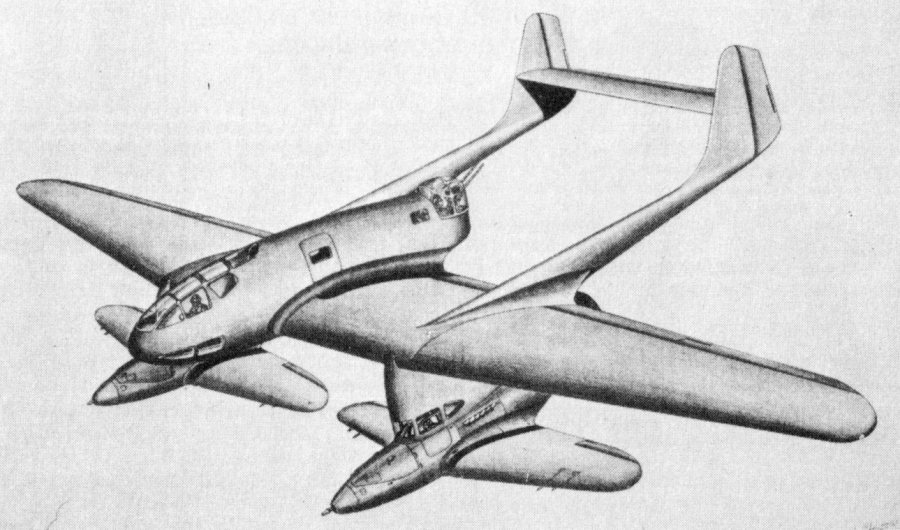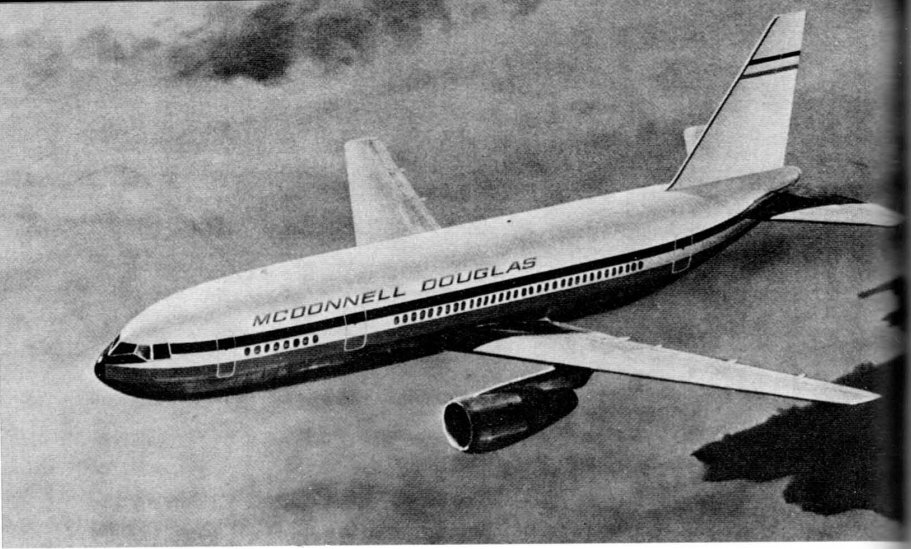The Baade Type 152 was an East German airliner, started 1955 and cancelled in 1961. It would have been a fantastic design immediately after WWII, but by the time it actually flew it was going up against far more modern designs such as the 707. Nevertheless, here’s an ad from 1960 trying to sell this dinosaur to the airlines of the world.
The full rez scan of the adn has been made available at 300 DPI to all $4/month patrons/subscribers in the 2021-09 APR Extras folder at Dropbox. If you would like to help fund the acquisition and preservation of such things, along with getting high quality scans for yourself, please consider signing on either for the APR Patreon or the APR Monthly Historical Documents Program.
An animation of one of the Lunar Escape System concepts. The idea was that if the lunar module ran into some sort of trouble and couldn’t launch back into orbit, the ascent stage could be torn apart and jerry-rigged into a minimalist launch system… essentially a couple of lawn chairs stuck to a few propellant tanks and a rocket. Could it have worked? Sure. Would it have worked? Ehhhhhh….
If it’s “do this crazy thing or give up and die,” I can see the Apollo astronauts getting straight to work.
An exploded view of the Lockheed L-2000 SST project from the 1960’s. This was the second-place finisher in the contest to develop a US supersonic transport, losing to the Boeing 2707. The 2707 won in part because it had variable-sweep wings, giving it better low speed performance… but after the contest was won, Boeing’s design shed the overly-heavy variable geometry for fixed wings not unlike those of the Lockheed design. In the end that couldn’t save the 2707 from the chopping block. Many have wondered over the last half-century what might have happened had Lockheed won the contract instead. Perhaps the sky would be filled with SSTs. Perhaps the L-2000 would have been a failure of historic proportions, with prototypes crashing or exploding in flight. Or perhaps it would have turned out just like the 2707… once detailed development began costs would have ballooned, performance suffered and Congress simply walked away.
The full article this came from has been scanned at 300 DPI (the image above was scanned at an additional, higher rez) and provided to all above-$10 subscribers and Patrons. If you would like to help fund the acquisition and preservation of such things, along with getting high quality scans for yourself, please consider signing on either for the APR Patreon or the APR Monthly Historical Documents Program.
0
Some time during the next month or so I plan on taking a trip to the Strategic Air Command and Aerospace Museum near Ashland, Nebraska. I have visited that museum many times over the years, but always while traveling back and forth, thus never able to spend more than an hour or so. I wanted to get there during the work on the SR-71 book so I could properly over-photograph their SR-71, but schedule, cost and a little thing called a “global pandemic” kept me home.
I still want to excessively photograph their SR-71 in order to perfect the large format print diagrams. And additionally, a potential future book (in discussion with Mortons, but nothing certain yet) would be aided by excessively over-photographing another aircraft in the SAC museum collection. I plan on taking a *lot* of photos (likely in the thousands) covering several aircraft in painful detail.
I had hoped that the release of “SR-71” would bring in increased business (the APR Patreon/Monthly Historical Documents Program, USBP’s, etc), but as has been all too common, business has actually *dropped* since the book came out. One of these days I swear I’ll figure out how every time I try my hand at advertising business actually collapses. I suspect that the truth of it will help open doorways into research in practical time travel, faster than light travel and popularity with women.
So, once again, I’m grubbing for funds to support this trip. If interested in helping out, just below there’s a drop-down menu of PayPal options, from “moral support” to “large sums.” The “Best Of” option will get those who chose it, as the title suggests, a selection of the best photos, probably over a hundred. The “All the Photos” option gives the funder just what it says, all the photos taken at the museum, including any panoramic shots I stitch together. The photos will be provided by way of a Dropbox folder or a ZIP file with all the photos.
I *may* extend the trip another day down the road to Denver to hit up the Wings Over The Rockies Museum for the same purpose, but only if there’s enough “investment.” If that happens, those who go for the full set of photos will also get the full set of photos from the WOTR Museum as well.
UPDATE: I’ve updated the draw-down PayPal menu. It didn’t have the prices on there initially.
UPDATE 2: trying again… arrrgh
———–
———–
—
A 1942 US Army Air Force artists concept of a “battleglider” depicts a troop transport glider with an unusual means for propulsion. Rather than being towed into the air, this aircraft relied on the powerplants of two bell P-39’s attached to substantial under-wing pylons. The pylons encompassed the cockpits of the fighters, necessitating large windows in the pylons for the pilots to see through.
I am *made* of questions when I look at this. During powered flight… who’s the pilot? I would assume the pilot of the glider, somehow having access to the controls of the fighters… at least the fighters engines. Do the pylons drop off after the fighter separate? Does landing gear deploy down through the pylons? You’re certainly not going to land safely with those pylons hanging down there. Who does the fighter-jettison? Again, presumably the glider pilot has control, but do the fighters have independent control? Are their aerosurfaces locked during attached flight? Can the fighter pilots force the glider to maneuver? The glider fuselage actually looks a little small; what’s the troop/cargo complement? Do the fighters promptly return to base after releasing the glider, or do they continue to provide cover and perhaps serve in the ground attack role?
The 1970’s saw a lot of airlines and airline manufacturers going to great lengths to economize, thanks in no small part to the spike in fuel prices and general economic downturn caused by the OPEC oil embargo. Some of this economizing came in the form of new “air bus” concepts to jam as many people as possible into mid-sized jetliners. Wide-bodied configurations were popular for that. McDonnell-Douglas proposed a new airliner in the mid-70’s that was derived from their long-range high capacity DC-10. The fuselage was cut short and stubby; the third turbofan at the base of the vertical tail was deleted. The wings and tail surfaces were all-new. This made it slightly more economical on a passenger-mile basis than the trijet, but also made it inappropriate for trans-oceanic flight since airlines were not yet ready to accept twin-jets for such routes. Intercontinental flight in twinjets would have to wait for the 777. McDonnell-Douglas figured that up to 278 passengers could be wedged into the available space… and that even more seats could be installed in the below-deck cargo bay.
The full rez scan of the two-page article about this design has been made available at 300 DPI to all $4/month patrons/subscribers in the 2021-09 APR Extras folder at Dropbox. If you would like to help fund the acquisition and preservation of such things, along with getting high quality scans for yourself, please consider signing on either for the APR Patreon or the APR Monthly Historical Documents Program.
0




